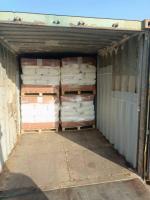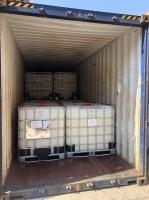Our Products
Polyacrylamide / Equivalent of Magnafloc LT-20 nonionic polyacrylamide can be replaced by Chinafloc N

Main Application of Nonionic Polyacrylamide (Magnafloc LT-20)
Nonionic polyacrylamide (Magnafloc LT-20) is a high-molecular-weight, water-soluble polymer designed primarily for use as a flocculant in various solid-liquid separation processes. The defining feature of nonionic polyacrylamide (Magnafloc LT-20) is its lack of charged functional groups, which makes it particularly suitable for treating suspensions in which ionic interactions could be undesirable or where the pH and ionic composition of the water vary widely. The main application of nonionic polyacrylamide (Magnafloc LT-20) is in mineral processing, wastewater treatment, and sludge dewatering, especially under conditions where anionic or cationic flocculants may not perform effectively.
1. Primary Role: Solid–Liquid Separation
The main application of nonionic polyacrylamide (Magnafloc LT-20) lies in its ability to aggregate suspended solids into larger flocs, which settle or filter more easily. In wastewater treatment and mineral processing, the presence of finely dispersed particles—such as clays, silts, or process by-products—can lead to poor clarity in effluent water. Nonionic polyacrylamide (Magnafloc LT-20) promotes the formation of large, dense flocs by bridging between particles without relying on electrostatic attraction. This makes it effective even when the particles themselves are neutrally charged or when charge conditions vary due to changes in pH, dissolved salts, or chemical composition.
2. Application in Mineral Processing
One of the major industrial uses of nonionic polyacrylamide (Magnafloc LT-20) is in mineral processing circuits, such as in coal preparation, iron ore beneficiation, gold extraction, and various other mining operations. In these processes, fine tailings or slurries are generated during ore grinding, washing, and separation stages. These tailings often contain ultra-fine mineral particles that are difficult to settle with gravity alone.
-
Thickener Performance – Nonionic polyacrylamide (Magnafloc LT-20) is commonly dosed into tailings thickeners to accelerate settling rates and improve the clarity of overflow water, allowing more process water to be recycled.
-
Tailings Management – By improving dewatering of tailings, the product reduces the footprint of tailings ponds and helps meet environmental discharge requirements.
-
Compatibility with Various Minerals – Because nonionic polyacrylamide (Magnafloc LT-20) does not depend on ionic charge interactions, it is suitable for mineral slurries containing a mix of silicates, oxides, sulfides, and other species with varying surface chemistries.
3. Application in Wastewater Treatment
Another important main application of nonionic polyacrylamide (Magnafloc LT-20) is in industrial and municipal wastewater treatment plants, particularly for suspensions with neutral or variable charges. Many wastewater streams—such as from paper mills, textile plants, chemical manufacturing facilities, and food processing plants—contain fine colloidal particles that resist settling.
-
Primary Clarification – In primary sedimentation tanks, nonionic polyacrylamide (Magnafloc LT-20) is added to improve solids removal efficiency, enhancing water clarity before secondary treatment.
-
Secondary Sludge Dewatering – For biological sludge from activated sludge plants, nonionic polyacrylamide (Magnafloc LT-20) is sometimes preferred when cationic polymers are not compatible with sludge chemistry.
-
Effluent Polishing – In tertiary treatment stages, nonionic polyacrylamide (Magnafloc LT-20) can be used alongside filtration to remove residual suspended solids, enabling compliance with stringent discharge standards.
4. Application in Sludge Dewatering
The main application of nonionic polyacrylamide (Magnafloc LT-20) also extends to sludge dewatering operations where charged polymers might cause re-dispersion or destabilization of sludge particles. Dewatering is typically carried out using:
-
Belt Filter Presses
-
Centrifuges
-
Chamber Filter Presses
By adding nonionic polyacrylamide (Magnafloc LT-20) before the mechanical dewatering stage, operators achieve higher cake solids content and reduced sludge volumes for disposal. This not only lowers transport and landfill costs but also improves the efficiency of sludge handling equipment.
5. Performance Advantages in the Main Application
The selection of nonionic polyacrylamide (Magnafloc LT-20) for these solid–liquid separation applications is driven by several performance advantages:
-
Broad pH Stability – Works effectively over a wide pH range, making it suitable for acidic or alkaline slurries.
-
Salt Tolerance – Performs well in brine or high-salinity waters where anionic or cationic flocculants may lose efficiency.
-
Reduced Risk of Overcharging – Since it is nonionic, it avoids excessive charge neutralization that can sometimes re-stabilize particles rather than flocculate them.
-
High Molecular Weight – The long polymer chains provide effective bridging between particles, producing large, robust flocs that settle quickly.
6. Typical Dosing and Handling in Main Applications
In its main application, nonionic polyacrylamide (Magnafloc LT-20) is generally supplied as a dry granular powder. To use it effectively:
-
Preparation – The dry product is dissolved in clean water to prepare a stock solution, typically at concentrations between 0.1% and 0.5%.
-
Dosing – Solution is metered into the slurry or wastewater stream at controlled rates, often in the range of a few grams per cubic meter of water or slurry treated.
-
Mixing – Gentle mixing is used to disperse the polymer and ensure uniform floc formation without breaking the flocs.
-
Storage – Dry product must be stored in cool, dry conditions, while prepared solutions should be used within 24 hours to maintain performance.
7. Environmental and Safety Considerations
While nonionic polyacrylamide (Magnafloc LT-20) is generally considered non-toxic in its polymerized form, its safe handling is important:
-
Dust Control – Fine powder can cause inhalation hazards; handling should be done in well-ventilated areas with appropriate PPE.
-
Slipperiness – Spilled product becomes extremely slippery when wet and must be cleaned immediately.
-
Biodegradability – The polymer itself is not readily biodegradable, but it does not bioaccumulate and is generally regarded as environmentally safe when used according to recommended dosages.
8. Industries Benefiting from the Main Application
The main application of nonionic polyacrylamide (Magnafloc LT-20) spans multiple industries:
-
Mining and Metallurgy – For thickening and clarification of tailings and process water.
-
Municipal Water Utilities – For sludge dewatering and final effluent polishing.
-
Pulp and Paper – For white water clarification and fiber recovery.
-
Textiles and Dyeing – For treatment of dye house effluent containing fine, color-bearing solids.
-
Food Processing – For clarification of wastewater containing fats, proteins, and starch particles.
Conclusion
The main application of nonionic polyacrylamide (Magnafloc LT-20) is in solid–liquid separation processes—primarily for mineral processing, wastewater treatment, and sludge dewatering—where its nonionic nature, high molecular weight, and wide operating range make it a versatile and reliable flocculant. By producing large, stable flocs without relying on charge neutralization, nonionic polyacrylamide (Magnafloc LT-20) provides consistent performance even in challenging water chemistries, ensuring efficient clarification, water recovery, and sludge volume reduction across diverse industries.





